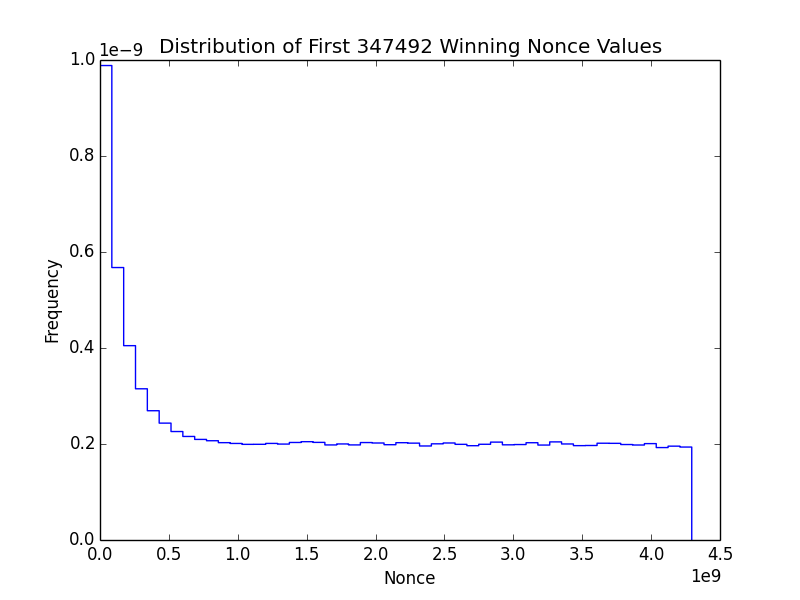I set out to test the claim: "Every nonce has an equal chance of winning."
Time Evolution
So, I plotted, with gnuplot, the nonce values vs. hashes for all the valid blocks in the blockchain:


(Also, in the last plot, you can really visualize the change in the difficulty and even see where the difficulty was decreased.)
Histograms
It makes sense that the nonces found are skewed toward 0 because this is a selection effect: most everyone starts searching for nonces starting at 0, so the lower nonces are found first, even though there may be also higher nonces that could produce a winning block:

Why are the hashes distributed this way, though?:

2-D histogram of hashes and nonces (logarithmic color scale):


